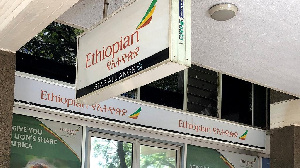The identification of human remains from the crash of Ethiopian Airlines Flight 302 is complete, the head of Ethiopia’s police said late on Monday, six months after the plane nosedived into farmland outside the capital Addis Ababa.
The investigation was “very challenging”, said Endeshaw Tassew, commissioner general of the Ethiopian Federal Police, in a statement broadcast on state television.
The Boeing 737-MAX slammed into the ground with such force that only fragments of those who died could be recovered.
Families heard the news that identification had been completed through the media.
“Families were devastated because of this. Almost all the old people, they took it very seriously. They are still in shock,” said Bayihe Demissie, who works with a committee formed by the families of Ethiopian victims.
“It took them back to all that pain. They (the airline) should have told us before they did anything. There should be a mechanism to discuss with families. All we need is for them to be gentle with us.”
Collecting and identifying the remains has been a fraught process. Families of those who perished complained of a lack of information about recovery efforts during which Ethiopian workers used metal aircraft parts to dig in the soil.
After initial sampling of the remains was done in Ethiopia, they were transferred to a laboratory run by UK-based Cellmark Forensic Services, which was contracted by the government, Endeshaw said.
Experts from another UK-based company, Blake Emergency Services, and from Interpol and the Ethiopian police were involved in preparing DNA samples and fingerprints.
Relatives of the crash victims found bones at the site as recently as July, Reuters reported last week.
Many relatives are pressing for the farmland where the plane crashed, about 60km (37 miles) east of the capital, to be turned into a permanent memorial. A spokesman for Ethiopian Airlines was not immediately available for comment.
Source: reuters.com
 Home Of Ghana News Ghana News, Entertainment And More
Home Of Ghana News Ghana News, Entertainment And More





